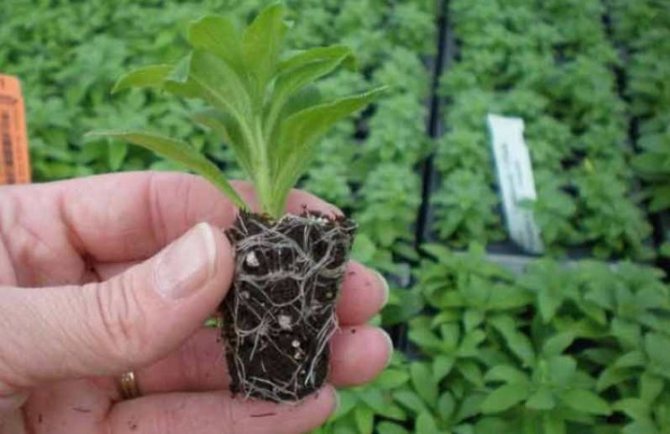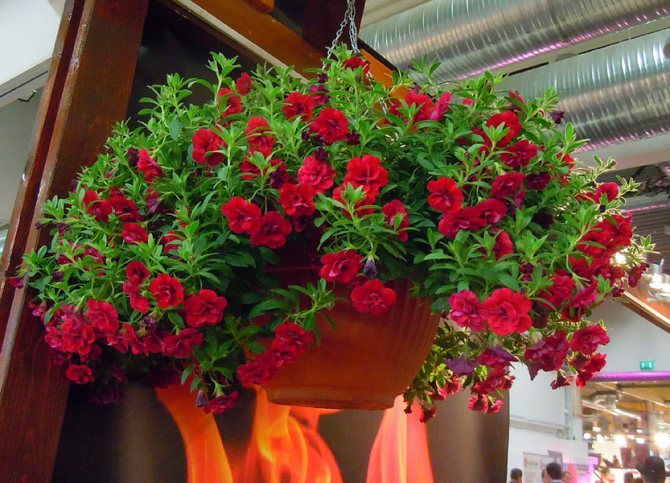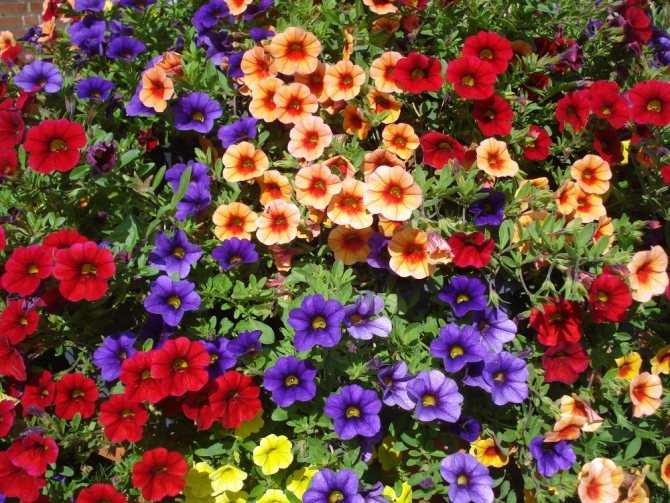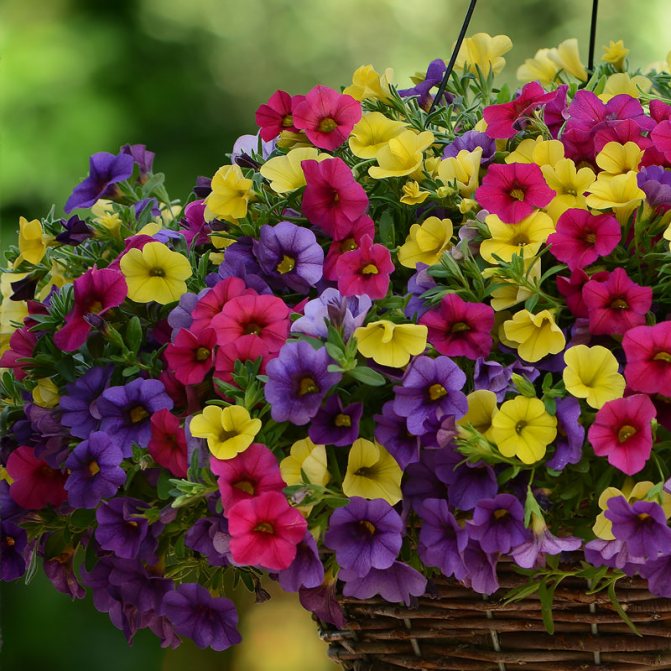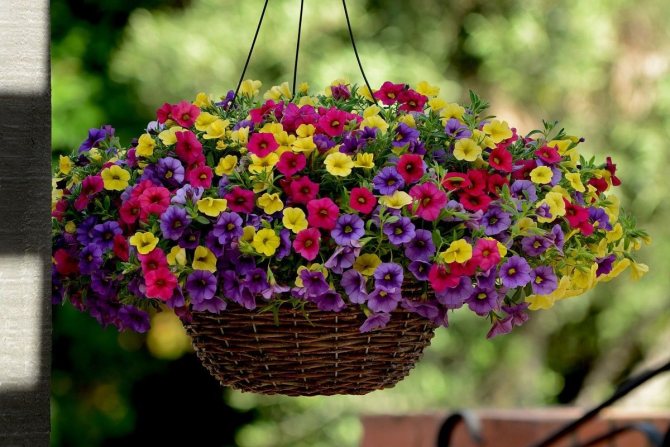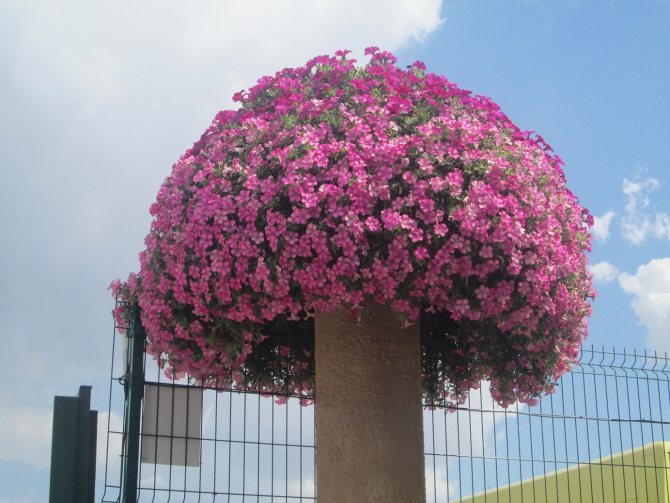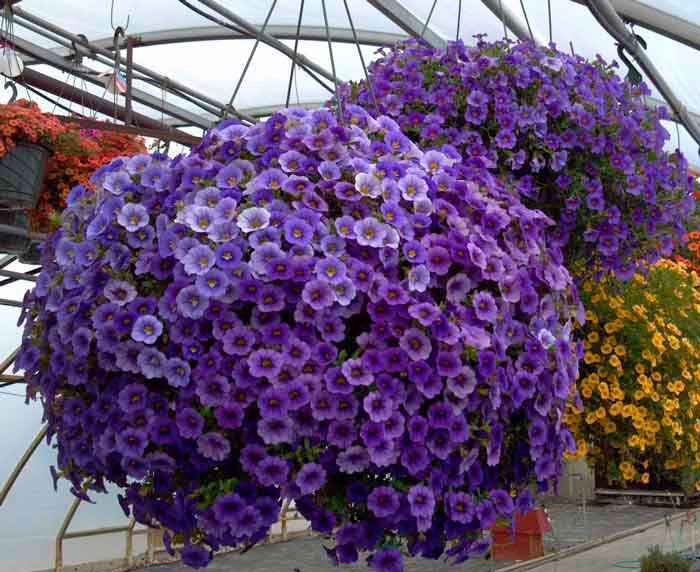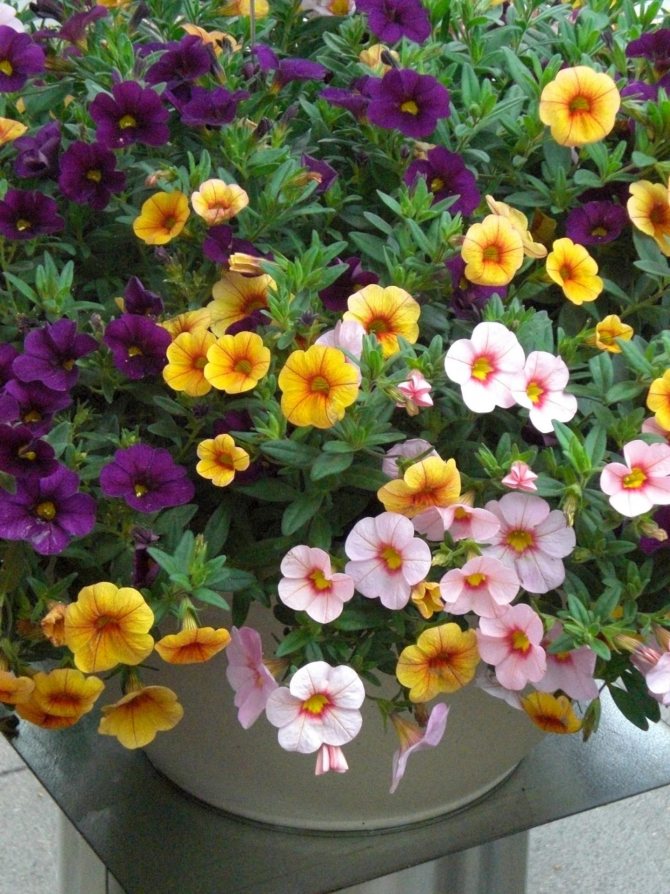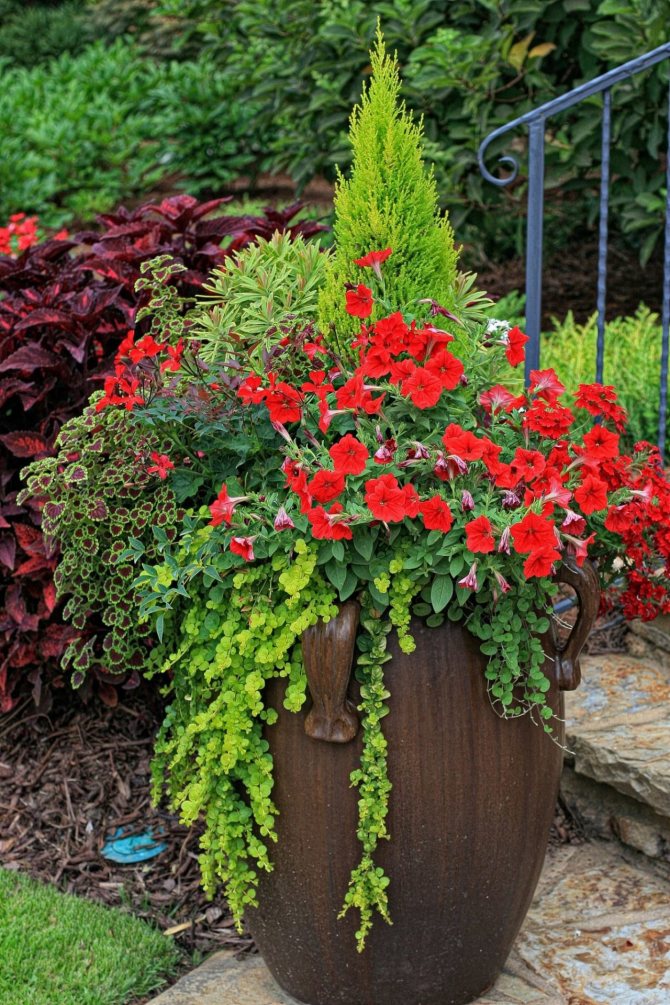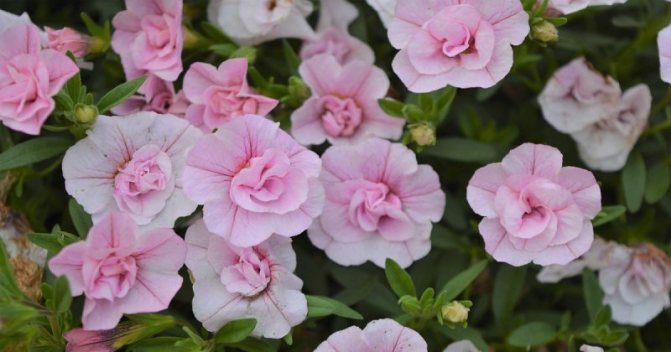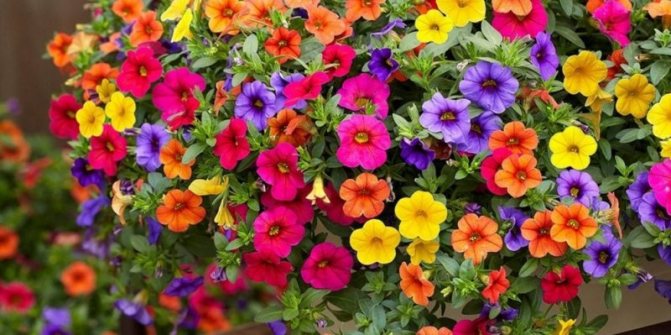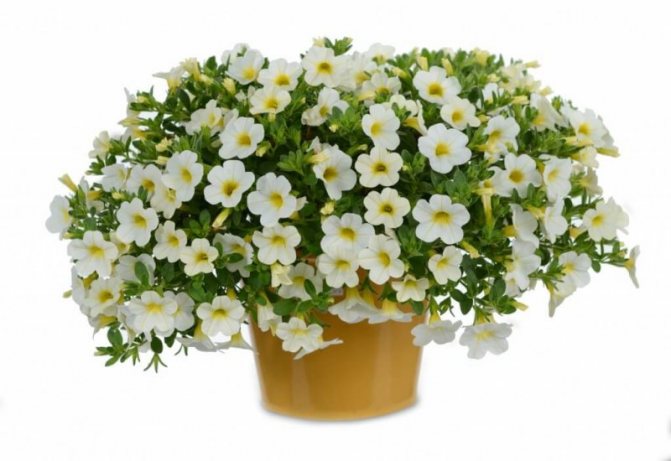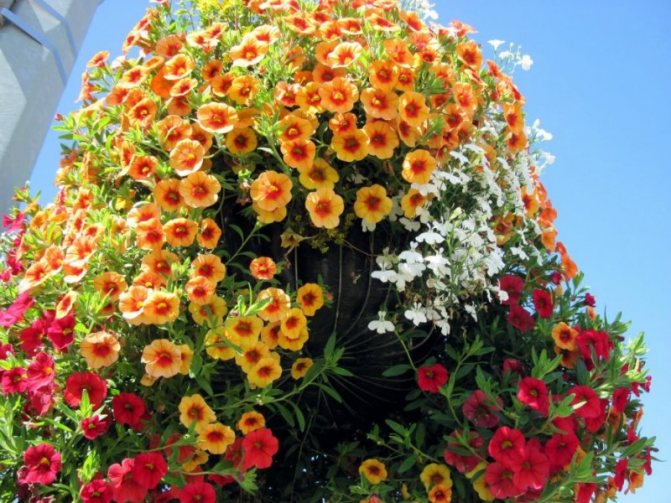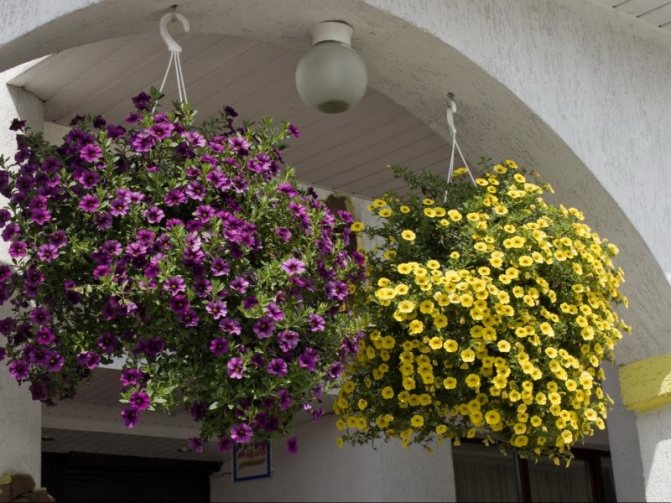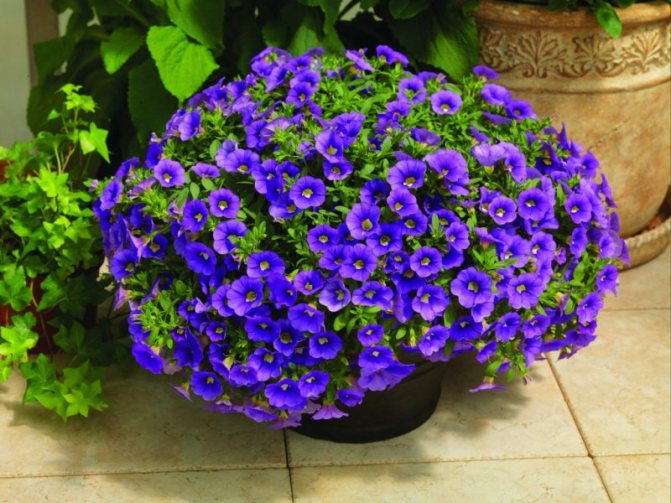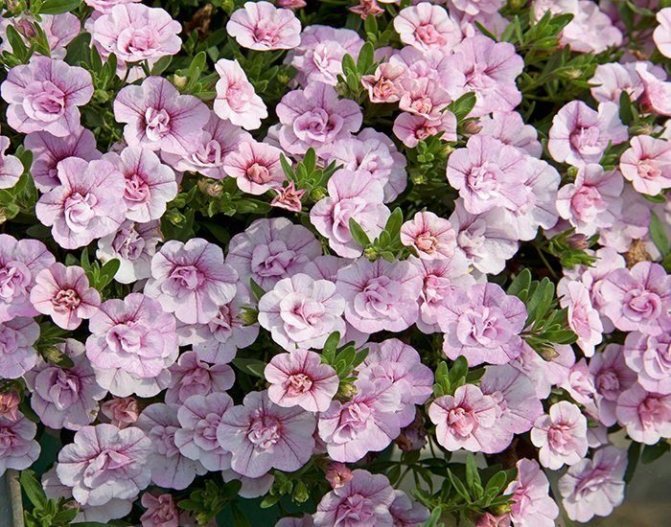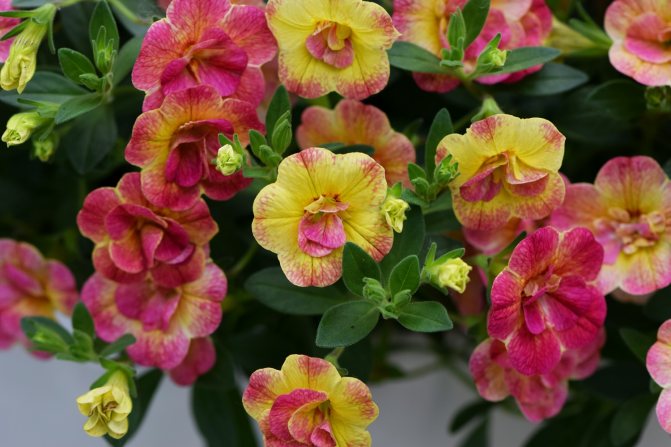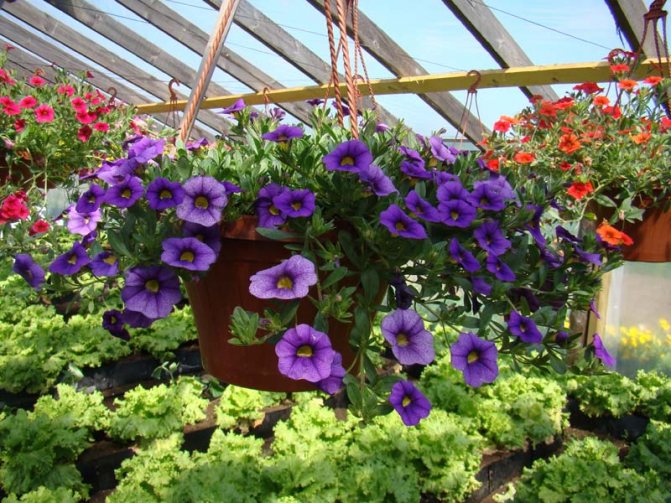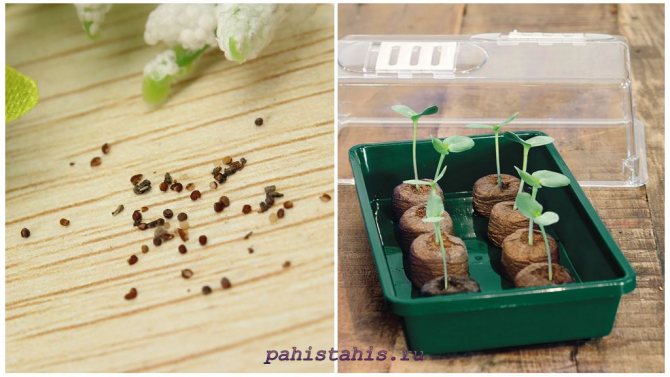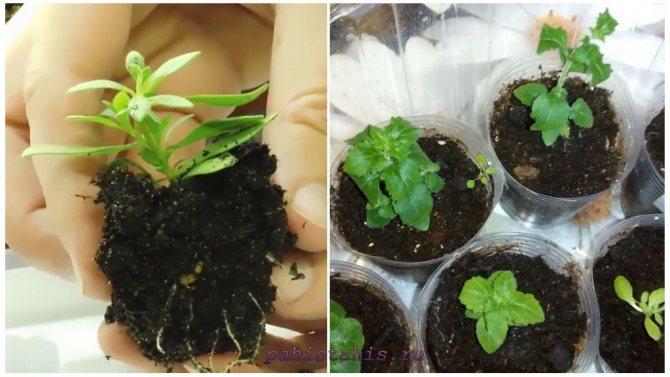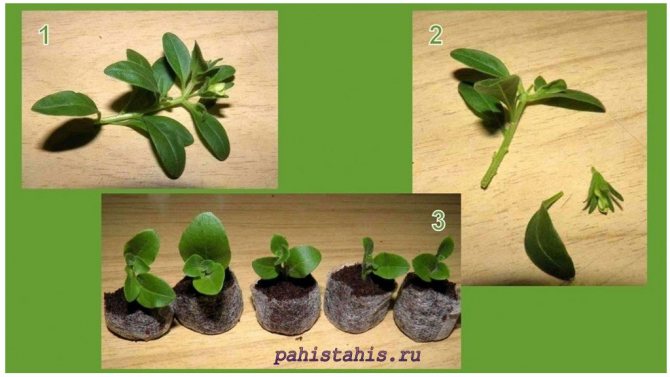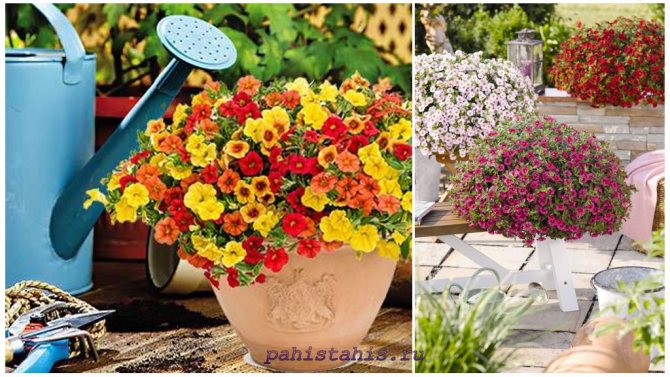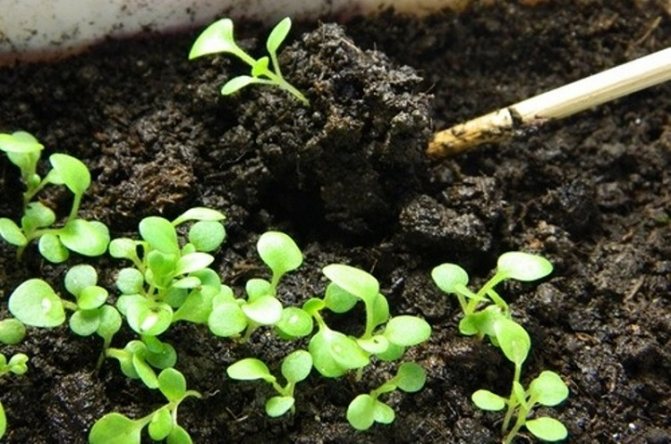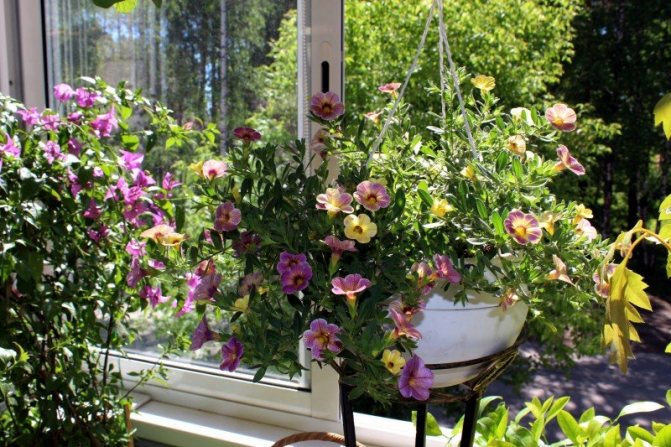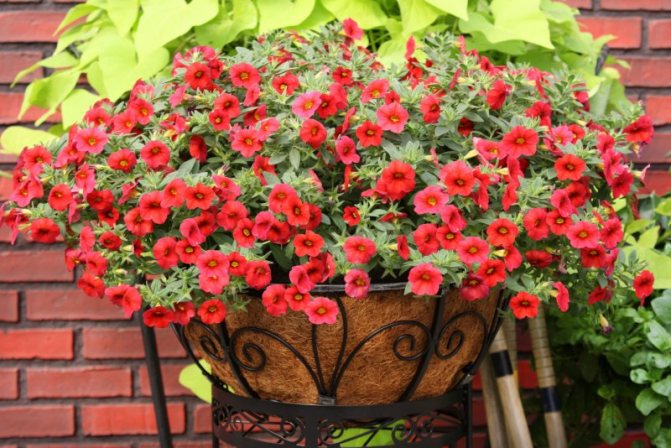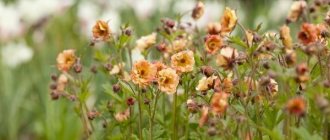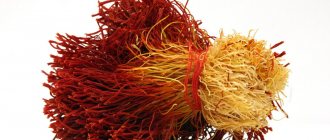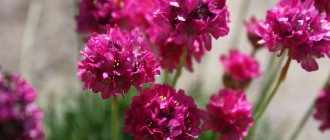Origin
Calibrachoa is a homely, very beautiful plant that will adorn any balcony and the pride of every flower lover. Calibrachoa resembles petunia in appearance, but calibrachoa flowers are much smaller in size. The native land of plants is South America. The genus Calibrachoa was first mentioned by botanists in 1925. It was believed that these flowers belonged to the genus petunias, but the study of the DNA of these two plant species showed significant differences between them. And in 1990, the plants began to be attributed to the genus Calibrachoa.

The birthplace of calibrachoa
Reasons for growing from seed
Despite the simplicity of growing plants from cuttings, many continue to buy seeds in the spring, and then plant the seedlings in the ground. Saplings are quite expensive and this is the key point why growers decide to go all the way on their own. Of course, it is a pleasure for amateurs to observe how the plant turns from a tiny seed into a large bush, but there are much fewer such people.
To decorate the balcony with lush inflorescences, it is not at all necessary to spend money on expensive seedlings. It is enough to buy a bag of seeds. Cultivation of calibrachoa has certain difficulties, but they are easy to overcome if you read the materials of the article. Simple rules will help you get a healthy and abundantly flowering plant throughout the summer.
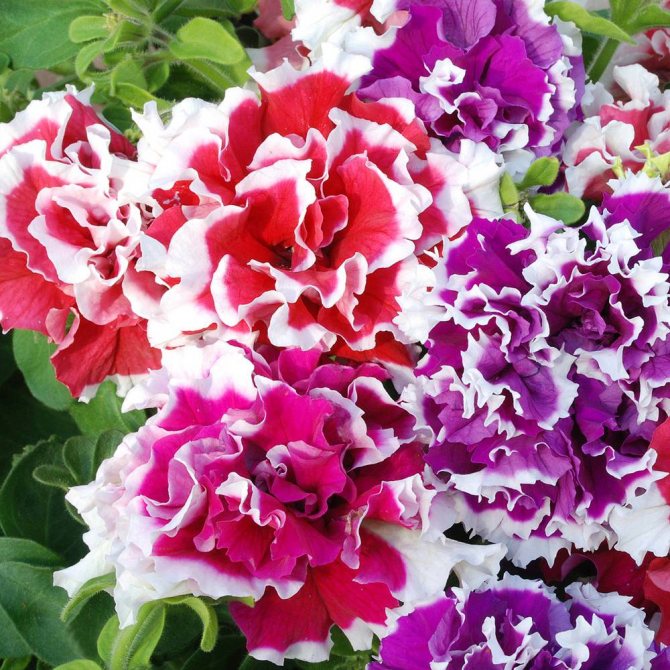

Description
Calibrachoa is a climbing ornamental plant that closely resembles petunia as noted above. However, its stems are more robust, about 80 cm long, and the leaves are about 4 cm long and are covered with slightly noticeable hard villi. Photos of calibrachoa flowers will leave few people indifferent. The shade of the buds of the plant is purple. However, there are other shades: brown, pink, red, yellow, blue. The flowers themselves have an interesting funnel-shaped shape, and they are no more than 3 cm in diameter.
There are several series of the genus Calibrachoa:
- Million bells... This series received this name for the abundance of flowers that are dotted with an adult plant. Its shoots sometimes reach a length of 1.5 m, which looks very impressive. This series includes 18 varieties, which differ in different shades of colors - from pink to yellow-orange and white.


Million bells - "Terry" series... A distinctive feature of this series is its lush and multi-layered flowers. The disadvantage is less abundant flowering. However, due to the beauty of the buds, this drawback is practically not noticeable.


Calibrachoa terry - Series "Kablum"... One of the first series, which began to grow in the Russian open spaces. This species is a bush with a height of about 30 cm with abundant flowering. The varieties in this series are characterized by blue, dark pink, yellow and white colors.
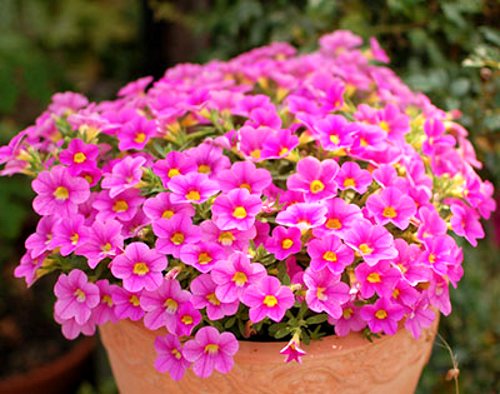

Calibrachoa Kablum - Series "Cabaret"... The flowers of this series are mostly white. However, there are also multi-colored specimens. This group includes about 12 varieties.


Cabaret - Series "Noa"... Plants from this group are characterized by the length of the stems, which reach no more than 0.5 m, as well as the two-color color of the buds. This series includes 6 varieties.
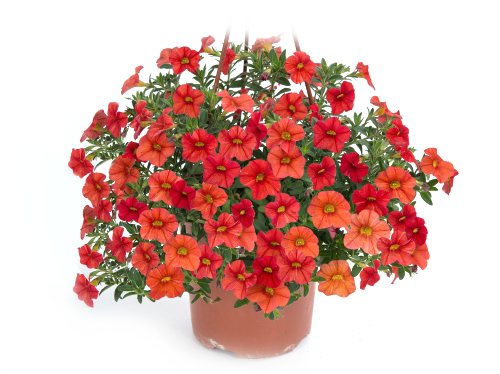

Noa
Varieties
To get a beautiful ball that shines in bright colors, you need to take good care of the calibrachoa. The variety of varieties allows you to choose exactly the kind that will be combined with other types of plants.
Plants are distinguished with a simple structure, simple with veins, terry. The first type is the most popular and is considered quite unpretentious. It includes the type "kablum", namely the varieties "deep blue", "white", "deep pink", "yellow".
The care and cultivation of veined calibrachoa is no different from the cultivation of varieties of other groups. The most popular representatives are:
- "Cherry Star" - blooms with dark cherry flowers with bright yellow veins. The variety looks impressive, bright, colorful.
- "Tequila Sunrise" - blooms with yellow flowers with red streaks and streaks.
- "Apricot punch" - pleases with yellow flowers with red veins.
- "Grape punch" - purple flowers with dark blue veins.
The double flower is found in the "double" series. The care and cultivation of calibrachoa of this species is a little more difficult, but the plant looks graceful. Among the representatives of the series are the "double pearl", "double pink", "double yellow". Plants with double flowers are less lush.
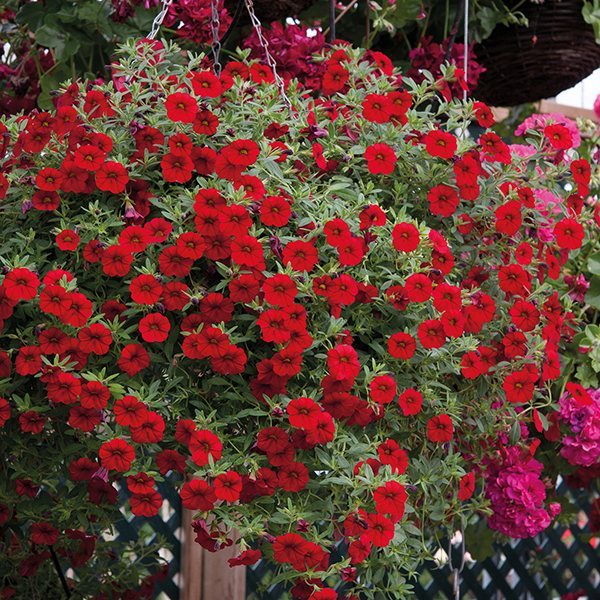

Care
Care of seedlings obtained from seeds
After the appearance of the first leaves on the shoots, it is necessary to start feeding. As it, you can use ampoules with vitamin B12, which are in any pharmacy, as well as a complex fertilizer containing trace elements (these two dressings alternate). Between dressings, it is necessary to water the seedlings with warm water. After the "kids" get stronger (about 4-5 leaves will appear on them), you can carefully transplant them into separate small containers, pinching the tops to form side shoots. It is necessary to feed the transplanted plant once a week. It is also advisable to monitor the temperature of the room in which the plants are located. It should be within 21-24C.


Various varieties
Care of cuttings
Rooted cuttings need daily spraying (at least twice a day). In this case, it is necessary to ensure that the soil is not too wet or dry. If mold forms on the ground, the number of irrigations must be reduced. When the roots of the cuttings reach 2 cm, they can be transplanted into separate containers with a diameter of about 5 cm.
Adult plant care
Calibrachoa can be transplanted when the plant reaches the desired size. To take out a flower outside no earlier than May. For an adult plant, about 3 kg of soil fertilized with humus or compost is required. The place in which the flower pot will be stirred must be well lit. However, direct sunlight must be avoided, otherwise the plant may die. Caring for an adult plant consists of three main points:
- top dressing;
- regular watering;
- maintaining the shape of the plant.
Plant feeding should be done at least once a week. The flowering plant is fed with fertilizers, which include potassium and phosphorus.
Watering the flower must be very careful: overflow of soil can lead to decay of the roots. This plant loves to shower, so it should be sprayed up to 4 times a day. It should be borne in mind that drops in direct sunlight can provoke leaf burns.
The formation of shrubs of calibrachoa consists in the removal of dead and diseased shoots and flowers, as well as pruning of regrown shoots.
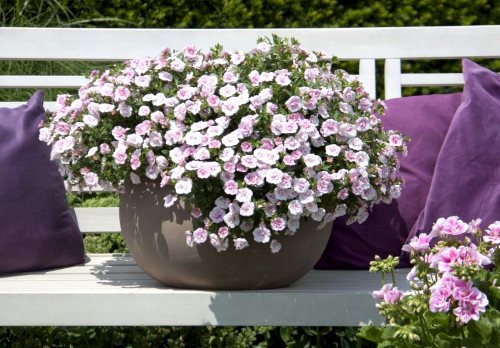

Calibrachoa in the garden
Planting seedlings in open ground


The planting site for calibrachoa should be well lit, since the culture is very photophilous.
The soil prefers loose and fertile, so vermiculite and nitrophosphate can be added to it before planting. From organic fertilizers, the introduction of compost and humus is recommended.
In no case should fresh manure be added - the seedlings will get sick!
As mentioned earlier, this plant does not like acidic soils, therefore, if necessary, it is deoxidized with lime or dolomite flour.
If the calibrachoa was planted in a permanent place in flowerpots, hanging boxes and pots, then it is preferable to place them in places protected from the wind and bring them under the roof during heavy torrential rains.
Pests, diseases of calibrachoa
Calibrachoa can be subject to the following diseases:
- root rot;
- chlorosis;
- blackleg;
- powdery mildew.
These diseases are treated with the help of fungicides (for example, "Chistotsvet").
In addition, these plants have enemies in the form of parasites:
- whitefly, the larvae of which suck the juices of the plant;
- aphid that completely destroys the flower;
- spider mite, which feeds on elements vital for the plant, which reduces the protective function of the flower;
- thrips, which feeds on the leaves of the plant.
For the destruction of pests, as well as for prevention, insecticides are used.
With proper care, as well as the timely prevention of diseases to which the plant is susceptible, calibrachoa will become a real highlight in the design of any site.
What you need to know about seeds?
F1 hybrids
When buying your favorite calibrachoa variety, it is important to study the explanatory labels on the packaging. So, for example, the symbol "F1" warns that the plant is a hybrid. From the seeds the variety will grow, which is declared by the manufacturer, but it will not give identical generations. In fact, this flower is an annual. Subsequently, it will not be possible to propagate it by seed or cuttings. Nobody knows how the second generation calibrachoa will grow.
Why do breeders develop varieties that are not resistant to the transfer of morphological traits? The question is philosophical. As a rule, hybrids take the best qualities from their parents. This means that they sprout better, bloom more abundantly, grow faster, and are more resistant to pests and an aggressive climate. Conclusion: calibrachoa - an annual definitely has a right to exist.
If desired, the grower will divide the seed package for 1-3 years and admire the lush bushes for 2-3 seasons.
On a note! Packing of bags with dragee calibrachoa can be different: from 3 to 500 pieces. The buyer will definitely find his favorite variety and the right amount of seeds.
Plasma Seeds
Plasma processing is a topic that has become the subject of heated discussions among flower growers. The manufacturer convinces that the latest technology can increase seed germination, reduce the risk of plant diseases, and calibrachoa as well. Professionals have already noted the effectiveness of the know-how. Indeed, plasma seeds produce vigorous seedlings that do not need to be treated with fungicides, insecticides or herbicides.
Plasma technology advantages:
- loosening and warming up the seed coat, which contributes to rapid germination when it enters the ground;
- destruction of many harmful microorganisms (viruses, bacteria) that cause various plant diseases;
- increasing the immunity of young calibrachoa, which means improving their development in difficult climatic conditions (during drought, in cold weather).
On a note! Plasma seeds are not soaked - they are immediately sown into the ground! The warranty period is 24 months.
Among amateur flower growers, there is an opinion that plasma processing is just a marketing ploy designed to increase product sales. The statement is partly true. Practice shows that the germination rate of plasma seeds calibrachoa increases by 10 - 20 positions (for example, from 75 to 90%), but does not give a 100% result.
In this case, the grower may not notice the difference between normal and plasma seeds. There is only one conclusion on the question - plasma treatment really improves the quality of seeds and stimulates their germination.But! No more than folk methods familiar to many gardeners.
What to look for when choosing Calibrachoa seeds?
First of all, it is worth contacting a trusted supplier, a manufacturer with a well-known name. This will minimize the risk of purchasing a counterfeit product.
Secondly, it is better to choose "fresh" seeds, which have not expired even half of their shelf life at the time of purchase.
If the package with calibrachoa contains about, this means that 1 dragee contains 3-6-9 seeds and when planting, the granules should be laid out less often than usual.
Reproduction
There is nothing difficult about growing calibrachoa. This can be done in two ways: using seeds, and also by cuttings. Below is a step-by-step description of each method.
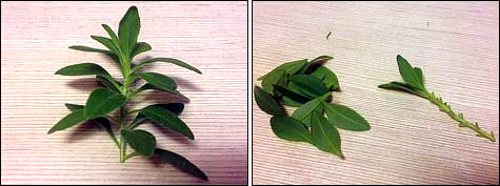

Stalk
Growing calibrachoa from seeds
This method includes the following steps:
- Soaking seeds in a special solution ("Zircon" or "Epin"). In this substance, the seeds must be kept for at least a day.
- Drying the seeds after soaking (on paper towels or on a thin cloth).
- Since the seeds are sown in peat tablets for seedlings, they must be prepared in advance. To do this, the tablets are soaked in boiling water and then cooled to room temperature.
- The prepared tablets are sown with seeds and placed under fluorescent lighting in special greenhouses. Plants should be illuminated for at least 16 hours a day.
The first shoots should appear about a week after sowing. They must be periodically ventilated by opening the greenhouse. And after a few days, generally remove the cover from the greenhouse.
Florist tips:
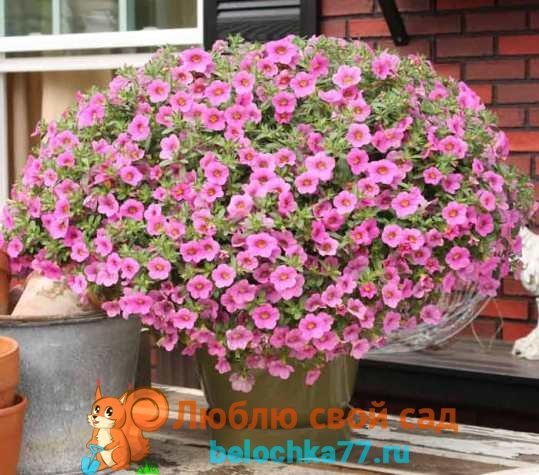

- Calibrachoa, growing in flowerpots and pots, needs more frequent feeding than plants in open ground, since it has a limited amount of land, in which nutrients are quickly depleted.
- The use of a hydrogel in pots and flowerpots is undesirable.
- The most suitable for planting calibrachoa are shallow containers with low walls.
- For better bushiness and flowering, it is necessary to pinch the calibrachoa over the fifth leaf. It is possible to re-pinch after 14 days, but it is not necessary.
Pinching a flower and wintering it
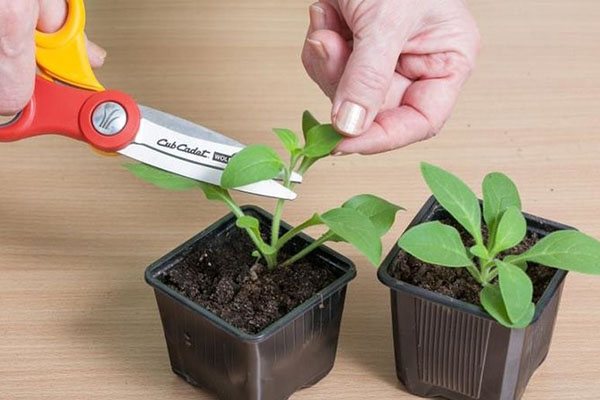

Many do not know how to pinch calibrachoa correctly and why this procedure is needed. This event is designed to make the bush look more voluminous and spreading. Pinching consists in picking off the upper cuttings and processes of the flower. Thus, the plant will grow not upward, but in breadth. You can tear off unnecessary processes both with your hands and with the help of nail scissors. The main thing at this moment is to be careful and not cut off excess. If everything is done correctly, then the calibrachoa will become lush in a short time, and the shoots will descend in a beautiful waterfall, forming an excellent decoration for your veranda.
Experts note that almost all the soil in pots needs to be changed every year to ensure full growth and ripening of flowers. This is due to the fact that very few nutrients remain in the old soil.
Most of the popular Calibrachoa varieties are annuals. Therefore, you can not worry about their wintering. However, experienced gardeners know that some species can be saved and next year they will again please with the usual colors. To ensure proper wintering of calibrachoa, a pot with a bush that has finished flowering is placed in a dark place and is practically not watered or fertilized. Can be lightly sprayed.
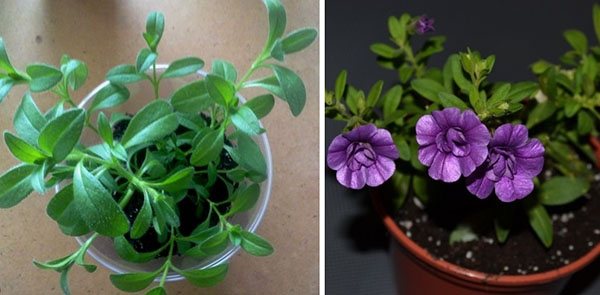

Thus, the plant is preserved. In the spring, you need to get it out and start looking after it in the same way as last year. It is important to provide the flower with enough daylight or artificial light, and then everything will go according to plan.



